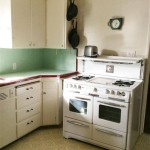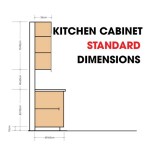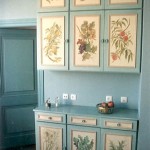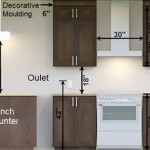Solid Pine Kitchen Cupboard Doors: A Comprehensive Guide
Solid pine kitchen cupboard doors represent a popular choice for homeowners seeking a blend of affordability, natural aesthetics, and ease of customization. Understanding the properties of pine, its various grades, and the finishing options available is crucial for making an informed decision. This article provides a detailed overview of solid pine kitchen cupboard doors, exploring their characteristics, benefits, considerations, and maintenance requirements.
Pine, a softwood derived from coniferous trees, is readily available and relatively inexpensive compared to hardwoods like oak or maple. This makes it an attractive option for budget-conscious homeowners. However, pine's softness also means it is more susceptible to dents and scratches than harder woods. The aesthetic appeal of pine lies in its natural grain patterns, knots, and warm color tones, which can range from light yellow to reddish-brown. These characteristics contribute to a rustic or country-style kitchen design, although pine can be adapted to suit various aesthetic preferences through different staining and painting techniques.
Understanding the Properties of Pine
The term "pine" encompasses a variety of species, each with slightly different characteristics. Some common types used for kitchen cabinetry include Eastern White Pine, Southern Yellow Pine, and Ponderosa Pine. Eastern White Pine is generally softer and lighter in color, making it easier to work with. Southern Yellow Pine is denser and stronger, offering better resistance to wear and tear. Ponderosa Pine falls somewhere in between, offering a good balance of workability and durability.
The density and hardness of pine are important considerations when selecting cupboard doors. A denser pine will be less prone to denting and scratching. The Janka hardness test measures the resistance of wood to indentation. While pine is generally considered a softwood, the Janka hardness rating can vary significantly between different species. Consulting with a woodworking professional can help determine the most suitable pine species for specific needs and intended use.
Moisture content is another critical factor affecting the stability and longevity of pine cupboard doors. Pine is susceptible to expansion and contraction with changes in humidity. It is essential that the pine is properly kiln-dried to a stable moisture content before being used for cabinet construction. This process minimizes the risk of warping, cracking, or joint failure over time. Reputable manufacturers adhere to strict drying standards to ensure the quality and durability of their pine products.
Benefits of Choosing Solid Pine
Solid pine cupboard doors offer several advantages that appeal to homeowners. One of the primary benefits is their cost-effectiveness compared to hardwood alternatives. Pine's abundance and ease of processing contribute to its lower price point, making it an accessible option for budget-conscious renovations.
Another significant advantage is the ease of customization. Pine's soft texture allows for effortless cutting, shaping, and routing, enabling intricate designs and profiles. It also accepts paint and stain readily, allowing homeowners to achieve a wide range of desired finishes. The versatility of pine makes it suitable for various kitchen styles, from traditional to contemporary.
The natural aesthetic appeal of pine is also a key draw for many homeowners. The visible grain patterns, knots, and warm color tones create a sense of warmth and character in the kitchen. This natural beauty can be enhanced through different finishing techniques, such as distressing or antiquing, to create a rustic or vintage look. The unique characteristics of each piece of pine ensure that no two cupboard doors are exactly alike, adding a touch of individuality to the kitchen design.
Furthermore, pine is a relatively lightweight material, which can be beneficial for larger cupboard doors or when installing cabinets in older homes with structural limitations. Its lighter weight reduces the strain on hinges and supporting structures, potentially prolonging the lifespan of the cabinetry.
Considerations When Using Pine for Kitchen Cupboard Doors
While pine offers several benefits, it's important to acknowledge its limitations. The softness of pine makes it susceptible to dents and scratches. This may be a concern for households with young children or pets, or in high-traffic kitchens where the doors are likely to experience frequent contact. Applying durable topcoats and being mindful of potential impacts can help mitigate this issue.
The presence of knots in pine can also be a consideration. While knots contribute to the wood's natural character, they can also be weak points that are prone to cracking or splitting over time. High-quality pine lumber is often graded to minimize the number of knots, or the knots are carefully filled and reinforced to prevent future problems.
Proper finishing is crucial for protecting pine cupboard doors from moisture and damage. Unfinished pine is highly absorbent and can stain easily. Applying a sealant, primer, and topcoat will create a protective barrier against water, grease, and other kitchen contaminants. The choice of finish will also affect the overall appearance of the doors, allowing homeowners to customize the color and sheen to match their desired aesthetic.
Finally, it is important to consider the long-term maintenance requirements of pine cupboard doors. Regular cleaning and occasional refinishing may be necessary to maintain their beauty and protect them from wear and tear. Applying furniture polish or wax can help protect the finish and prevent scratches. Addressing any dents or scratches promptly can prevent further damage and prolong the lifespan of the doors.
Finishing Options for Solid Pine Cupboard Doors
The finishing options for solid pine cupboard doors are vast, allowing homeowners to achieve a wide range of looks. Paint is a popular choice, offering durability and the ability to match any color scheme. When painting pine, it is essential to use a high-quality primer to prevent the tannins in the wood from bleeding through the paint. Multiple coats of paint will provide a smooth, even finish and enhance the durability of the doors.
Staining is another common option, allowing the natural grain patterns of the pine to show through. Stains are available in a variety of colors, from light and natural tones to dark and rich hues. Applying a stain conditioner before staining can help ensure even color absorption and prevent blotchiness. A clear topcoat is essential to protect the stain and provide a durable finish.
Varnishes and lacquers offer a clear protective coating that enhances the natural beauty of the pine. These finishes are available in different sheens, from matte to high gloss. Varnishes and lacquers are durable and resistant to scratches and moisture, making them a practical choice for kitchen cupboard doors. Multiple coats are typically required for optimal protection.
Distressing techniques can be used to create a rustic or vintage look. These techniques involve intentionally damaging the surface of the wood to create the appearance of age and wear. Distressing can be achieved through various methods, such as sanding, scratching, or applying specialized finishes. This technique adds character and charm to pine cupboard doors, making them suitable for farmhouse or country-style kitchens.
Maintenance and Care of Pine Cupboard Doors
Proper maintenance is essential for preserving the beauty and longevity of solid pine kitchen cupboard doors. Regular cleaning with a damp cloth and mild detergent is recommended to remove dirt and grease. Avoid using abrasive cleaners or harsh chemicals, as these can damage the finish.
For painted doors, touching up any chips or scratches promptly will prevent further damage and maintain a uniform appearance. For stained or varnished doors, applying furniture polish or wax periodically can help protect the finish and prevent scratches. Be sure to use products specifically designed for wood furniture.
Addressing any water damage promptly is crucial to prevent warping or rotting. If water is spilled on the doors, wipe it up immediately. If the doors become excessively wet, dry them thoroughly with a fan or dehumidifier. Consider applying a water-resistant sealant to vulnerable areas, such as the edges of the doors, to provide additional protection.
Adjusting hinges as needed can prevent sagging or misalignment of the doors. Loose hinges can cause the doors to rub against the cabinet frame, leading to wear and tear. Tightening the screws or replacing the hinges can resolve this issue. Properly aligned doors will function smoothly and extend the lifespan of the cabinetry.
By following these maintenance tips, homeowners can ensure that their solid pine kitchen cupboard doors remain beautiful and functional for many years to come. The natural charm and versatility of pine make it a timeless choice for kitchen cabinetry, adding warmth and character to any home.

Pine Traditional Style Kitchen Integrated Appliance Door 600mm Wide

Handmade Bespoke 1 Panel Solid Pine Shaker Style Kitchen Cupboard Door Ref

Clear Pine Replacement Kitchen Door Doors Galore

Get Started On Your Project Quote Solid Wood Kitchens Kitchen Cabinets Rustic

Pine Traditional Style 2 Door Kitchen Base Unit 1000mm Wide
-8206-p.jpg?strip=all)
Pine Kitchen 450mm Integrated Door

Pine Traditional Style 2 Door Kitchen Base Unit 800mm Wide

Pine Kitchen 450mm Integrated Door

Restoration Tips Advice For Kitchen Cupboard Doors Worktops

Pine Traditional Style 2 Door Drawer Kitchen Base Unit 1000mm Wide
Related Posts








